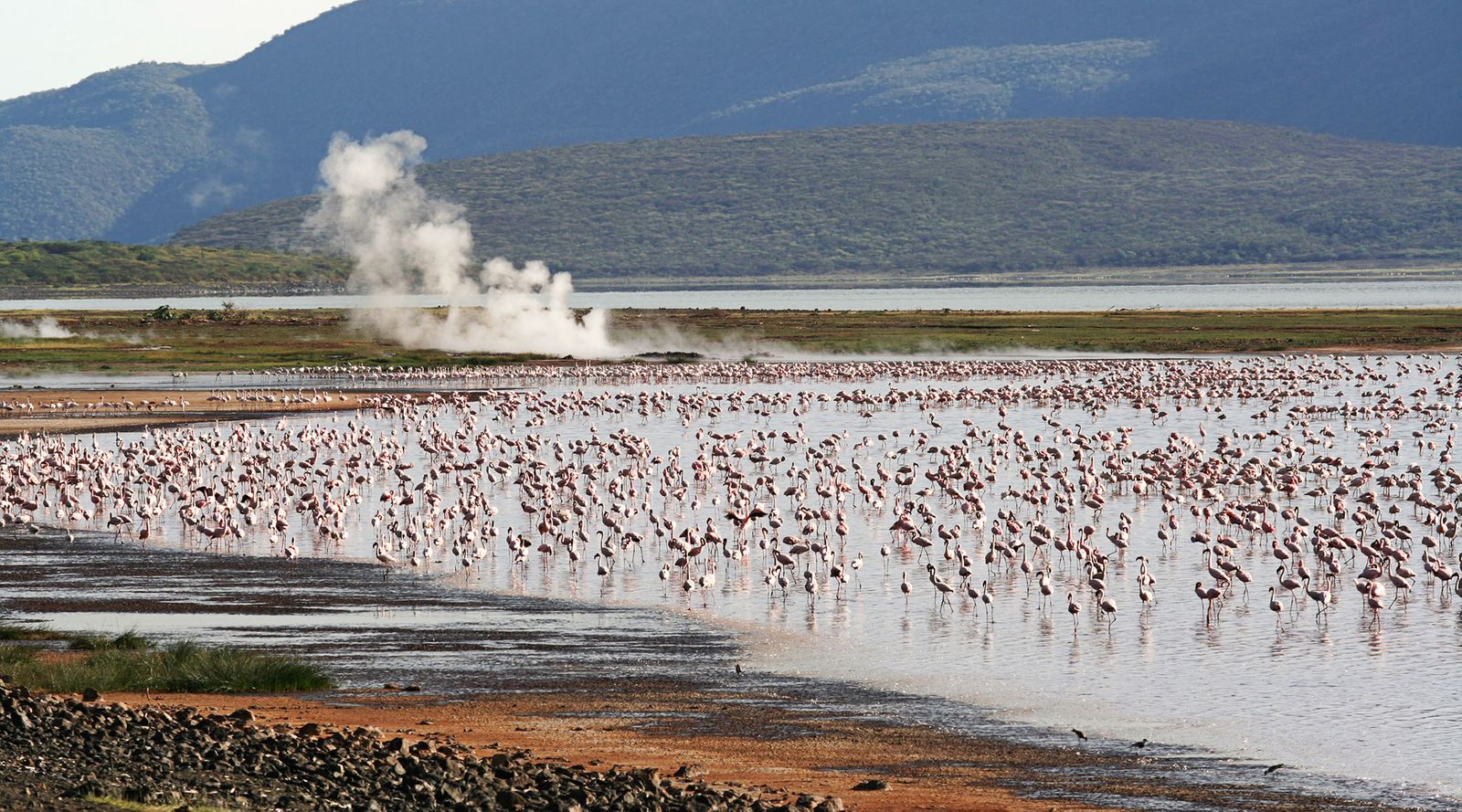Lake Bogoria
The lake Bogoria lies in a trough below the Ngendelel Escarpment, a shear wall 600 meters high. The lake covers 32 square kilometers. It is geothermically active on the western shore, with geysers and hot springs.The major river feeding the lake is Waseges River, which rises on the northern slopes of the Aberdare Range. The geologist J.W. Gregory described the lake in 1892 as “the most beautiful view in Africa”.
The lake is alkaline, feeding blue-green algae which in turn feed flamingoes. At times the number of flamingoes feeding in the lake may be as high as two million. Raptors such as tawny eagles prey on the flamingoes, in total 135 species of bird have been recorded. They include little grebe, pratincole, swift, little bee-eater, cape wigeon, yellow-billed stork, African spoonbill, augur buzzard, gabar goshawk, water dikkop, great tit, starling, hornbill and crombec.
The reserve has a herd of the relatively uncommon Greater Kudu. Other large mammals include buffalo, zebra, cheetah, baboon, warthog, caracal, spotted hyena, impala and dik dik. Many visitors are attracted to the hot springs on the western Lake shore and may also bathe in the hot springs, which form a natural spa.
Activities
- Bird watching including flamingoes


